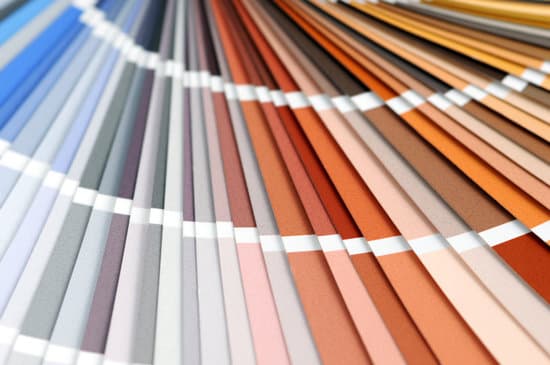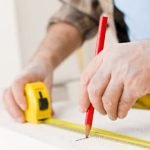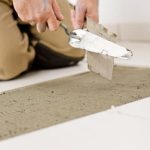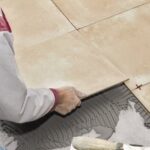When it comes to home improvement projects, many homeowners turn to loans to help finance the cost. One of the key factors to consider when taking out a loan for home improvement is the Annual Percentage Rate (APR). But what exactly is a good APR on a home improvement? Understanding the importance of APR in home improvement loans is crucial in finding the best financing option for your project.
The APR represents the true cost of borrowing, including not only the interest rate but also any additional fees and charges. It gives you a holistic view of what you’ll be paying over the life of the loan, making it an essential factor to consider when comparing different loan options.
In this article, we will explore the various factors that influence APR on home improvement loans, as well as provide tips for securing a low APR and understanding how your credit score impacts your potential rates.
We will also discuss how to shop around for the best APR and compare fixed versus variable rates for home improvement loans. By understanding these key elements, you can make informed decisions and ultimately save money on your home improvement financing.
Factors That Influence APR on Home Improvement Loans
When considering a home improvement loan, one of the most important factors to understand is the annual percentage rate (APR). The APR represents the true cost of borrowing, including interest and any additional fees. It is crucial to consider the factors that can influence the APR on home improvement loans in order to obtain the best financing option for your needs.
Credit Score
One of the primary factors that can influence the APR on a home improvement loan is your credit score. Lenders use credit scores to assess the risk of lending money to an individual. Those with higher credit scores are typically offered lower APRs, as they are seen as less risky borrowers. On the other hand, individuals with lower credit scores may be offered higher APRs or may even struggle to qualify for certain loans.
Loan Term
The loan term, or the length of time over which you will repay the loan, can also impact the APR. Generally, shorter loan terms tend to have lower APRs compared to longer terms. This is because lenders take on less risk with shorter repayment periods. However, it’s important to consider how a shorter term may affect your monthly payments and overall financial situation.
Type of Loan
The type of loan you choose for your home improvement project can also influence the APR. For example, secured loans that are backed by collateral such as your home may have lower APRs compared to unsecured personal loans. Additionally, government-backed loans like FHA Title I or VA renovation loans may offer competitive rates due to their specific guidelines and backing from government agencies.
Understanding these factors and how they can impact your APR will help you make informed decisions when exploring home improvement loan options. By assessing your credit score, considering different loan terms, and researching various types of loans, you can work towards securing a favorable APR for your home improvement project.
Comparing Fixed Versus Variable APR for Home Improvement Loans
When considering a home improvement loan, one important factor to consider is the annual percentage rate (APR). The APR represents the cost of borrowing, including both the interest and any additional fees. It’s important to understand what is a good APR on a home improvement loan in order to ensure you are getting the best deal possible.
Factors that influence APR on home improvement loans include the borrower’s credit score, the loan amount, repayment terms, and the lender’s individual policies. Typically, borrowers with higher credit scores are more likely to qualify for lower APRs. Additionally, smaller loan amounts or shorter repayment terms may also result in better APR offers.
When comparing fixed versus variable APR for home improvement loans, it’s essential to understand the differences between the two. A fixed APR remains consistent throughout the entire life of the loan, providing stability and predictability in monthly payments. On the other hand, a variable APR can fluctuate based on an underlying benchmark interest rate. While a variable APR may start lower than a fixed rate, it can also increase over time.
In order to secure a low APR on a home improvement loan, it’s crucial to shop around and compare offers from multiple lenders. Additionally, improving your credit score before applying for a loan can help you qualify for better rates. Understanding how different factors affect your APR can empower you to make informed decisions when choosing a home improvement loan.
| Loan Amount | Average Fixed APR | Average Variable APR |
|---|---|---|
| $5,000-$15,000 | 5% | 8% |
| $15,001-$50,000 | 0% | 2% |
Tips for Securing a Low APR on Home Improvement Loans
When it comes to securing a low APR on home improvement loans, there are several factors to consider. A good APR on a home improvement loan is typically considered to be around 3-6%, depending on the current market conditions and the borrower’s creditworthiness. The annual percentage rate, or APR, reflects the true cost of borrowing, including interest and fees, so it’s important to aim for the lowest possible APR when seeking a home improvement loan.
One of the most important tips for securing a low APR on a home improvement loan is to shop around and compare offers from different lenders. By obtaining quotes from multiple lenders, borrowers can ensure that they are getting the best possible rates for their individual financial situation.
Additionally, borrowers should take into account whether they want a fixed or variable APR. While a fixed APR provides stability in monthly payments, a variable APR may start off lower but carries the risk of increasing over time.
Another tip for securing a low APR on home improvement loans is to improve your credit score before applying for financing. Lenders use credit scores to assess the risk of lending to an individual, with higher scores typically resulting in lower APR offers. Borrowers can work on improving their credit score by paying bills on time and reducing outstanding debt before applying for a home improvement loan.
| Loan Type | Average APR Range |
|---|---|
| Home Equity Loan | 5% – 9% |
| Personal Loan | 6% – 36% |
| Cash-out Refinance | 3% – 7% |
The Impact of Credit Score on APR for Home Improvement Loans
When it comes to securing a home improvement loan, your credit score plays a crucial role in determining the annual percentage rate (APR) that you will be offered. Lenders use your credit score as an indicator of your ability to manage debt and make on-time payments. The higher your credit score, the lower the risk for lenders, which can result in a lower APR for your home improvement loan.
Factors that Influence APR on Home Improvement Loans:
– Credit Score: As previously mentioned, your credit score is a significant factor in determining the APR for a home improvement loan. A good credit score can help you secure a lower APR, while a poor credit score may result in a higher APR.
– Loan Term: The length of your loan term can also impact the APR. Shorter loan terms typically come with lower APRs, while longer terms may result in higher APRs.
– Loan Amount: The amount you borrow for your home improvement project can influence the APR. Larger loan amounts may come with lower APRs, while smaller loans may have higher APRs.
Tips for Securing a Low APR on Home Improvement Loans:
1. Improve Your Credit Score: Before applying for a home improvement loan, focus on improving your credit score by paying bills on time and reducing outstanding debt.
2. Shop Around: Compare offers from multiple lenders to find the best possible APR for your home improvement loan.
3. Consider a Co-Signer: If you have a less-than-perfect credit score, consider using a co-signer with a strong credit history to help secure a better APR.
By understanding how your credit score impacts the APR for home improvement loans and taking steps to improve it, you can increase your chances of securing a favorable interest rate for your project.
Exploring the Average APR Rates for Home Improvement Loans
When considering a home improvement loan, it’s important to understand the average APR rates that you may encounter. The Annual Percentage Rate (APR) represents the total cost of borrowing, including the interest and fees, expressed as a yearly percentage. Knowing the average APR rates for home improvement loans can help you make informed decisions and secure a loan with a competitive rate.
To give you a better idea of what to expect, here are the average APR rates for home improvement loans:
- For borrowers with excellent credit (above 760), the average APR for a home improvement loan is around 5.99%.
- Those with good credit (between 700-759) can expect an average APR of approximately 6.5%.
- Borrowers with fair credit (between 620-699) may face average APR rates of 9.5% or higher.
It’s important to note that these are just averages, and individual rates can vary based on several factors such as credit score, loan amount, repayment term, and lender policies.
When seeking a home improvement loan, understanding the average APR rates gives you a benchmark for comparison. You can use this information to assess whether the offers you receive are in line with industry standards or if they are unusually high or low. Additionally, being aware of these averages can help you negotiate more effectively and identify any red flags in potential loan offers.
How to Shop Around for the Best APR on Home Improvement Loans
When it comes to taking out a home improvement loan, finding the best APR is crucial in ensuring that you save money in the long run. The APR, or annual percentage rate, represents the true cost of borrowing by including both the interest rate and any additional fees associated with the loan.
However, with so many lenders offering different APRs, it can be overwhelming to know where to start. Here are some tips on how to shop around for the best APR on home improvement loans.
Research Different Lenders
The first step in finding the best APR on a home improvement loan is to research and compare offerings from different lenders. This can be done by visiting various banks, credit unions, and online lenders to inquire about their APR rates for home improvement loans. By obtaining multiple quotes, you can get a better idea of what competitive rates are available in the market.
Consider Loan Terms and Fees
In addition to comparing APR rates, it’s important to consider the loan terms and any associated fees when shopping around for a home improvement loan. Some lenders may offer lower APRs but compensate with higher fees or shorter repayment periods. It’s essential to weigh all these factors when making a decision about which lender offers the best overall package for your needs.
Negotiate With Lenders
Finally, don’t be afraid to negotiate with lenders once you have gathered multiple quotes. If you have a strong credit history or are willing to secure your loan with collateral, such as your home equity, you may be in a position to negotiate for a lower APR. Many lenders are willing to work with borrowers who demonstrate good financial standing and may offer more favorable terms as a result.
Understanding the True Cost of a Home Improvement Loan With a Good APR
In conclusion, understanding what a good APR on a home improvement loan is crucial for anyone looking to finance their renovation project. The APR, or annual percentage rate, encompasses not only the interest rate but also any additional fees or charges associated with the loan. This means that getting a good APR can save you money in the long run and make your home improvement project more affordable.
Factors such as credit score, loan term, and the type of APR (fixed or variable) can all influence the APR on your home improvement loan. By shopping around and comparing different lenders, borrowers can find the best possible APR for their situation.
Securing a low APR on a home improvement loan requires careful planning and research. By improving credit scores, taking advantage of promotional offers, and negotiating with lenders, borrowers can increase their chances of obtaining a lower APR. Ultimately, understanding the true cost of a home improvement loan with a good APR is essential for making informed financial decisions when it comes to renovating your home.
Frequently Asked Questions
Why Are Home Improvement Loans So Expensive?
Home improvement loans tend to be expensive due to the potential risks involved for the lender. Also, the costs associated with processing and administering these types of loans may add to the overall expense.
Is a 5 Percent APR Good?
A 5 percent APR can be considered good depending on the type of loan and current market conditions. In general, a 5 percent APR is lower than the average APR for many types of loans, so it can be seen as favorable.
What Is a Reasonable APR for a Loan?
A reasonable APR for a loan can vary depending on factors such as the borrower’s credit score, the type of loan, and current market conditions. Generally, a single-digit APR is considered reasonable for most consumer loans, but lower is always better if possible.

I’m thrilled to have you here as a part of the Remodeling Top community. This is where my journey as an architect and remodeling enthusiast intersects with your passion for transforming houses into dream homes.





